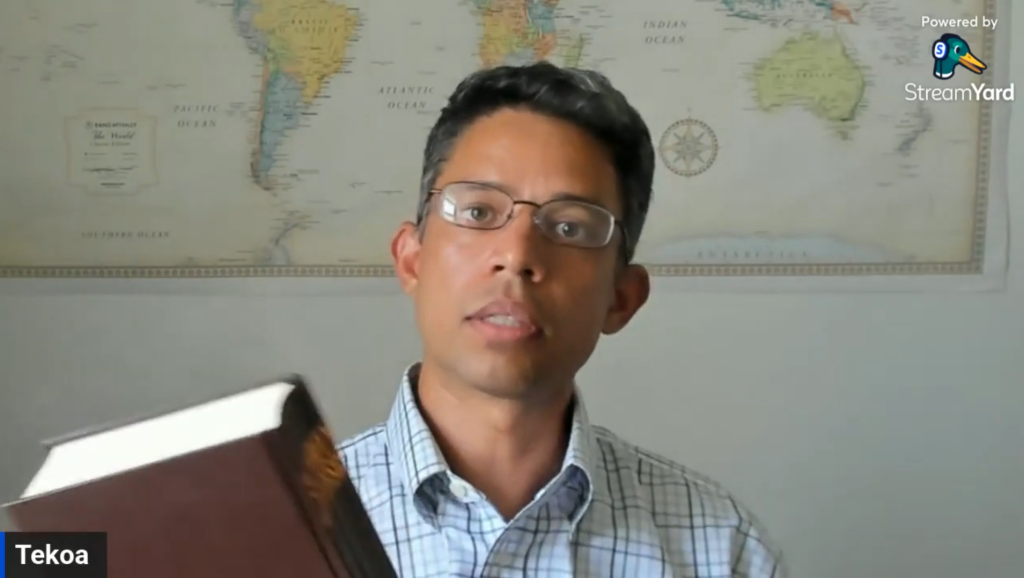By: Tekoa Da Silva
8/11/2025
What Causes Inflation?
In my opinion, there are two general sources of price inflation – money printing and government intervention in the marketplace.
Money printing has two basic components: printing of paper currency, and credit expansion. Government intervention on the other hand contains more moving parts, some of which are hidden—in plain sight. We may not recognize them as causes of inflation, as they are not ‘marketed’ that way by our government. But indeed they are contributors to inflation. They are: 1) Government indebtedness, 2) Government auctioning of our rights and freedoms to big businesses, 3) Import tariffs, and 4) Price controls.
These combined forces create a whirlwind of inflation over time, but thankfully, there are investment choices we can make, to shield ourselves from the gathering storm.
There are famous pictures from places like Germany, Zimbabwe, and Venezuela of people carrying stacks and stacks of currency notes. Big bricks of paper money wrapped with rubber bands sometimes being burned in a fireplace to stay warm. Printing an ocean of currency notes is clearly an obvious source of inflation.
Author’s Note: Host governments and their central banks may not always be the only culprit when it comes to severe inflation. Throughout history, warring states have used economic warfare techniques against each other. One of those techniques is to undermine your opponent’s currency system by dumping counterfeit currency into their economy. The resulting hyperinflation creates social chaos – a ripe and vulnerable condition, for internal and external attacks.[i]
In addition to over issuance of paper currency, we should also add, expanding credit. This would mean making credit available to anybody with a pulse – mortgage loans, credit cards, business loans, margin loans, personal loans, lines of credit – the interest rate charged doesn’t matter all that much, but rather, it’s the total amount of the credit expansion that is most important.
As people make use of the credit, and spend it into the economy, prices of goods and services go up. And as the credit continues growing like a bubble, prices keep going up in tandem. Technically this process can continue until the money is virtually worthless.
On to government intervention – the first type of intervention is the government going deeply into debt. In simple terms this means the government spending more than earned in tax revenue. As the debt accumulates, so do the interest payments. The government then starts raising taxes and creating new taxes that didn’t exist before. This can be sales tax, food tax, property tax, gasoline tax, income tax, tobacco tax, excise tax, use tax, the list goes on and on.
They may also start requiring you to obtain a license and permit to do things that previously did not require a permit or license to do. And that new permit or license – let’s say to be able to cut somebody’s hair, handle food, or clip somebody’s toenails – those new permits and licenses require new fees to be paid in order to obtain the permit or license. And those fees will go up continuously when the government is deeply in debt. So an indebted government guarantees more future inflation.
The next form of government intervention is taking away the rights and freedoms from individuals and businesses, and selling them back in the form of licenses and permits granting monopoly-style privileges–but in this case they sell those freedoms back in a limited quantity to the highest bidders.
This could take the form of a liquor license that a business must buy to legally sell alcohol where the license may cost a few hundred thousand dollars to purchase. Our neighbor Fred might want to sell beer out of his garage to you and me, but that would be illegal without a license. He may need to spend a few hundred thousand dollars obtaining that license, and then secondly, he may need to spend a few hundred thousand more, to obtain commercial space to be able to get a serving permit, to serve the alcohol. So our neighbor Fred might need to spend $400,000 before he’s able to legally sell, you and me a beer.
The same thing goes with producing and selling milk, food products, or other goods and services that would require spending a few hundred thousand dollars (or more) just to start your business.
This also includes a wonderful man or woman who wants to sell hamburgers, hot dogs, sandwiches, or offer a family recipe from a table, located on the side of the road. Most likely, they’ll receive a warning from law enforcement, to shut that activity down, and if they don’t, they’ll end up in jail.
Imagine how much prices would go down, and how much quality and variety of food options would go up—in the U.S. as an example—if all permitting, licensing, and regulation on food vendors just went away. Those that use the freshest ingredients and have the best recipes, would be rewarded by the market with a growing business. Those who do not sell a clean, fresh, and delicious product would not receive return business from customers.
But fast food franchises, with their expensive commercial space and big bank loans will spend any amount of money they need on government lobbying, to make sure the competition I mentioned never surfaces. That deprives consumers from having extra choices. Big business will spend the money necessary to pay off politicians, requiring new businesses to cough up hundreds of thousands of dollars in startup capital–knowing this will keep many new competitors out of the business. All in the name of protecting the consumer of course.
And so it goes with every industry – the largest companies pay the government to increase fees, licenses, permits, and compliance regulations on small and mid-sized businesses until they’ve all gone out of business. Once the smaller competitors are gone, the large monopoly operators are free to raise prices, and lower quality standards. The government ‘powers’ they’ve purchased, form a protective moat around their own business, protecting them from unwanted competition. All at the expense of the consumer.
Import tariffs and price controls are another form of government intervention that drive up inflation.
Import tariffs are simply a tax added to an imported product from another region. The tariff allows domestic producers to raise their prices on consumers, and it discourages these consumers from purchasing the now, more expensive foreign products. It adds to the moat of protection around domestic producers, with consumers footing the bill.
Price controls are in intervention where the government dictates the maximum or minimum price that a business or person is allowed to sell their product or service for. Throughout history it has been abused, and it always leads to higher prices and shortages of goods and services.
For example, let’s say to combat high inflation – government might announce that loaves of bread cannot be sold for more than $.50 cents each. But if the cost of wheat, salt, water, and baking time requires a cost of production of $1.50 per loaf – producers will simply stop baking bread.
The store shelves will empty, and hidden black markets will develop where the price of bread may skyrocket to $10.00 per loaf. The high price would be exacerbated due to the risk of criminal penalties for anyone caught buying or selling bread for over $.50 cents per loaf.
An interesting example is Jacob Maged of Jersey City, owner of a dry-cleaning shop. In 1934, Jacob was sentenced to jail and paid a $100.00 fine (which in those days was approximately 3 oz. of gold – worth about $10,000.00 dollars today), for the crime of cleaning and pressing a suit for “too low” a price. The government mandated a $.40 price, but he only charged the customer $.35, and was fined and sent to jail. The price control was part of U.S. President FDR’s “National Recovery Act” which mandated a series of wage and price controls across the country.[ii]
The way markets should work, is that government should not intervene in the market to protect the biggest companies.
If shortages develop organically for any product or service – a free market would allow the price of a good or service to rise, and, new producers should be allowed to enter the market freely, without government barriers. This would allow new supply into the market when it’s needed, bringing down prices for consumers.
Additionally, if banks and financial institutions were not allowed to lend money they do not have on hand – known as fractional reserve banking – lines of credit would be substantially reduced, further bringing down prices for consumers.
If our currency was backed by a tangible good which cannot be printed (such as precious metals), that would provide another form of price stability for consumers.
But sadly these types of changes would never occur without a bloody revolution. Continuously high rates of inflation, and government decreed privileges for big businesses are simply too profitable to give up. We’ll just have to plan for more inflation.
However, there are investments individuals can consider today, that perform best under conditions of increasing inflation. They’re generally described as ‘tangible’ investments. They include asset classes such as: precious metals, oil & gas, agriculture, and certain forms of real estate (such as farmland).
The last period of rapid inflation in the U.S. was the decade of the 1970s. During that decade many tangible investments rose in price over tenfold (such as gold), while investments in sectors vulnerable to high rates of inflation such as general equities – languished.
There are two main causes of price inflation: money printing and government intervention in the marketplace.
Money printing as a source of inflation is a fairly straight forward concept. Government intervention on the other hand is never marketed as inflation-creating – but it generates inflation while hiding behind various gimmicks. These gimmicks include government indebtedness, wholesale auctioning of rights and freedoms to big businesses, import tariffs, and price controls.
These combined forces create a whirlwind of inflation over time. However, tangible asset classes perform best during periods of high inflation. Thankfully, investors have the choice to shield themselves from the gathering storm.
Thoughts?
Send me a note:
——-
Tekoa Da Silva
tekoadasilva (at) gmail (dot) com
https://x.com/TekoaDasilva















